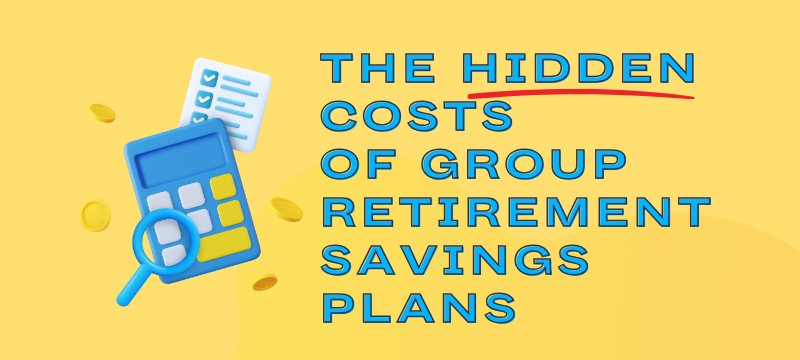In private businesses, effective marketing is essential for success—it’s how companies capture attention, build…

The Hidden Costs of Group Retirement Savings Plans: Why It’s Time to Challenge the Status Quo
When evaluating employee benefits, employers often focus on health and dental coverage and Group Retirement Savings Plans (GRSPs). While the costs associated with health and dental benefits are clear, the hidden costs of GRSPs often remain unnoticed.
Many companies offer a Group RRSP or defined contribution plan but may overlook the hidden expenses beyond the employer’s contributions. It’s not just about the financial input—it’s also about the effectiveness of investment management. In a tight job market, where many employees are financially unsavvy and living paycheck to paycheck, a well-managed retirement savings plan can be a powerful tool, not only for attracting top talent but also for improving your employees’ financial futures.
Why the Status Quo Isn’t Enough
Offering a Group RRSP or Defined Contribution plan involves straightforward costs. However, the real financial impact often stems from suboptimal investment returns due to employees choosing their own investments and their limited financial knowledge. This can negatively affect their retirement savings and overall job performance due to financial stress.
The Gap Between Expected and Actual Returns
Despite the ideal return rate of 6.5%, many GRSP members experience a more realistic average return of around 4.5%. This discrepancy is due to several factors:
- High fees associated with plan administration and sales commissions.
- Lack of investment knowledge among plan members.
- Biases in investment decisions (e.g., emotional investing, recency bias).
- Limited access to diverse investment strategies compared to Defined Benefit pensions.
This difference can be substantial. For instance, consider an employee who starts working at age 25 with an initial salary of $45,000, receiving annual salary increases of 2.5% (to account for long-term inflation). If this employee earns a 4.5% return on their retirement savings instead of 6.5%, they might accumulate $469,203 by age 65 compared to $752,729—an alarming shortfall of $283,526. To cover this gap, employers would need to contribute an additional 4% of the employee’s salary, significantly increasing costs.
A Better Way Forward
So, what’s the alternative? It’s time for employers to challenge the status quo by adopting an employer-led retirement plan managed by professional investment teams. This approach provides employees with the same level of sophisticated management as Defined Benefit pensions, often achieving returns of up to 8%.
By transitioning to a professionally managed plan, employees benefit from advanced investment strategies, potentially enhancing their retirement savings and simplifying the investment process. Most importantly, the burden of selecting investments is removed from them.
Why This Matters
In a competitive job market, offering a professionally managed, employer-led retirement plan can be a game-changer. By embracing this innovative approach, employers can deliver greater value to their employees with less effort—a win-win scenario.
Ready to Explore a Better Retirement Savings Strategy?
If you’re ready to explore how a professionally managed, employer-led retirement plan can benefit both your company and employees, now’s the time to take the next step toward a more effective savings strategy. HJ Group, a trusted family business in employee benefits and group retirement services, prioritizes people over profits, focusing on the needs of their team and clients. With over 95% client retention, they consistently help clients reach their goals while fostering a strong company culture. To review your benefits or group retirement plan, contact Mark Lyons, President, at [email protected] or 647-832-2410. You can also reach out through our contact page.



